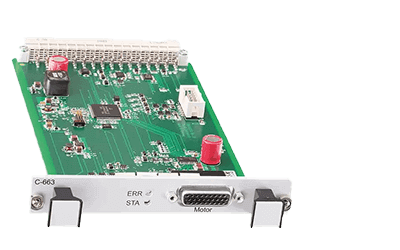What Is a Motor Controller?

A motor controller is a device that controls the operation of a motor.
A motor refers to a device that performs rotary motion. To control the drive of a motor, a control method, control circuit, and drive circuit are required. If a motor is to have only a simple rotary motion, it can be controlled by switching between stop and drive with only a power supply unit.
However, motors are used as driving parts in home appliances, automobiles, machine tools, and other applications that require more complex driving than simple stop-and-drive alone. The speed and direction of rotation must be changed to match the motion.
Therefore, various signals are received from sensors and switches, etc., and signal processing is performed to determine the appropriate response. Then, by issuing commands to the motor drive circuit, the number of revolutions, direction, speed, etc. are controlled.
Applications of Motor Controllers
Familiar applications include vibrators in cellular phones, functions to control airflow in hair dryers in home appliances, and vibrations in electric toothbrushes. On a larger scale, they are used in the drive systems of golf carts, forklifts, and other vehicles powered by electric power.
Industrial controllers smoothly control multi-axis motion. In this case, high-speed and complex high-precision control is required. FA equipment such as semiconductor manufacturing, inspection equipment, and machine tools require accuracies from a few nm to a few micrometers. From such high-precision equipment to simple labor-saving devices, motor controllers are used as the core of motor control.
Principle of Motor Controllers
Motor controllers receive real-time signals from motors sent from sensors and switches, and control the number of revolutions, rotation speed, positioning, etc. by controlling electric power. DC motors and stepping motors are mainly used.
DC motors can change their rotation speed depending on the magnitude of the applied voltage. In the case of a motor controller using a microcontroller, the number of revolutions and direction of rotation can be changed by sending signals from software.
Stepping motors can be controlled by a motor controller for highly precise positioning. It has the feature of not requiring detection of the amount of rotation. Stepping motors rotate in steps of a fixed angle in synchronization with input pulses. The resolution is about 1.8°, 0.72°, and 0.36° per step.
Features of Motor Controllers
Motor controllers are responsible for some functions of systems that use motors. Therefore, it is important to work with a higher-level controller and downstream motor drivers and motors employed.
A key feature of motor controllers is that, in advanced systems, they are capable of synchronized control of multi-axis motors. Multi-axis synchronous control can, for example, perform complex movements such as linear, circular, step, and rotational motions, cam motions, and acceleration/deceleration in 2-D and 3-D space.
Types of Motor Controllers
There are several types of motor controllers: independent controllers, controllers for industrial PCs, controllers for PLCs, etc. A PLC is a controller with programmable logic circuits.
1. Stand-Alone Controllers
This type of control controller can be selected from a PLC, an industrial PC, or a notebook PC for a host controller. It also has the great feature that it can be used independently without a host controller.
This type of controller is often used when constructing small-scale control devices with several axes to medium-scale control devices with several dozen axes. This is the case when precise control on the order of several nm is not required and control on the order of sub-μm is also not necessary.
2. Industrial PC Controllers
This is a card type used by inserting it into a PCI slot of an industrial PC. It is used for large-scale, high-speed control where a microcontroller is inadequate.
A wide variety of applications for general-purpose PCs can be used, and high-speed, high-precision control of multi-axis motors can be realized.
3. Controller for PLC
PLC controllers are dedicated controllers for PLCs, which enable multi-axis, high-speed synchronized control that is not possible with PLCs alone, and many companies use their communication standards and connection methods for communication with PLCs, making high-speed communication control easy.